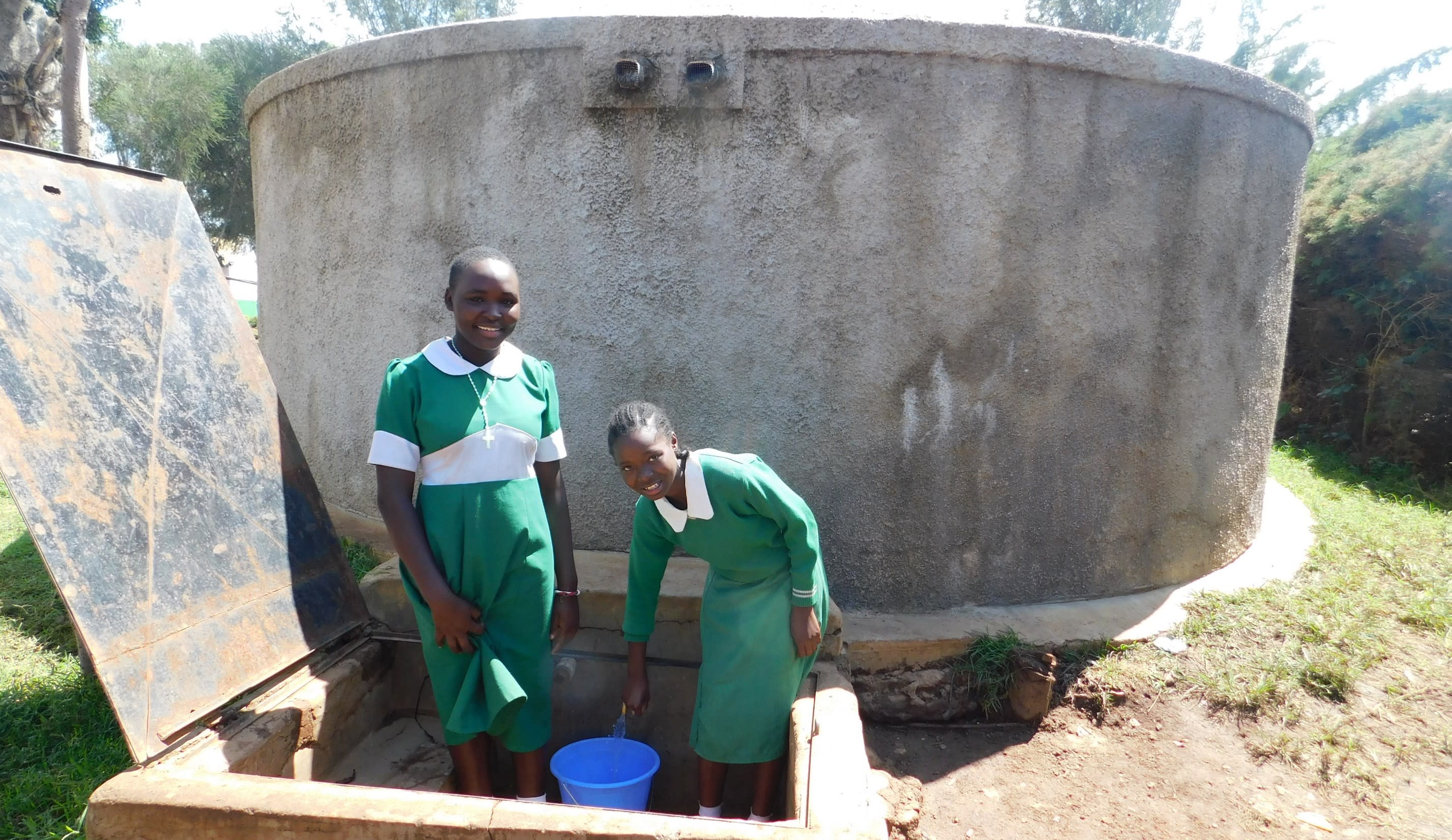Erusui Girls Primary School does not have enough water. Valuable time is spent out of class and in the community searching for enough water. Each one of these 705 girls is affected by the tiring interruptions caused by the severe water shortage at their school.
This is a very busy, highly populated area with a great road network.
A Day in the Life
A normal day starts very early in the morning since the first morning classes at Erusui Primary begin at 6:30. Lunch break ends at 2pm, marking the start of afternoon lessons that run until 3:40pm.
Water
There is a 5,000-liter plastic tank placed inside the old crumbling walls of a concrete tank built when the school first opened. This is nowhere near enough to meet drinking, cooking, and cleaning needs for several hundred people. As a result, students must leave school throughout the day to find more water.
To save time, girls fill their containers at Margaret Jumba Spring, which is currently an open polluted water source. The school is grateful for having some LifeStraw filters that help make this water safer for drinking. However, the challenge of getting enough water to even pour into these containers persists. At the time of our visit, most of these containers didn't have any water.
Between the long trip from home carrying heavy water containers and return trips back out into the community, girls have a hard time concentrating in class and performing well in their studies. Not only is this a tiring chore, but it's dangerous as the girls walk beside or cross the busy roads on the way to the spring.
Sanitation
There are not nearly enough latrines, so girls are sent to use the latrines at Erusui Boys Primary School. The school used to have lots of pit latrines, but the pits collapsed and they're now used for garbage disposal. Now the school is at risk of closure by the local health department. Headteacher Musedi said it's "only by the grace of God" that they're still running the school.
Though the compound looks clean and green without much litter, there isn't enough water to rinse latrines or practice good personal hygiene. Because of this, pupils are exposed to hygiene-related sicknesses.
What we can do:
Training
Training will be held for two days. The facilitator will use PHAST (participatory hygiene and sanitation transformation), ABCD (asset-based community development), CTC (child to child), lectures, group discussions, and handouts to teach health topics and ways to promote good practices within the school. The CTC method will prepare students to lead other students into healthy habits, as well as kickstart a CTC club for the school.
Handwashing Stations
The CTC club will oversee the new facilities, such as handwashing stations, and make sure they are kept clean and in working condition. The two handwashing stations will be delivered to the school, and the club will fill them with water on a daily basis and make sure there is always a cleaning agent such as soap or ash.
VIP Latrines
Two triple-door latrines will be constructed with local materials that the school will help gather. Three doors will serve the girls while the other three serve the boys. And with a new source of water on school grounds, students and staff should have enough to keep these new latrines clean.
Rainwater Catchment Tank
A 50,000-liter rainwater catchment tank will help alleviate the water crisis at this school. The school will also help gather the needed materials such as sand, rocks, and water for mixing cement. Once finished, this tank can begin catching rainfall that will be used by the school’s students and staff.
We and the school strongly believe that with this assistance, standards will significantly improve. These higher standards will translate to better academic performance!
This project is a part of our shared program with Western Water And Sanitation Forum (WEWASAFO). Our team is pleased to provide the reports for this project (edited for readability) thanks to the hard work of our friends in Kenya.

 Rainwater Catchment
Rainwater Catchment
 Rehabilitation Project
Rehabilitation Project

































